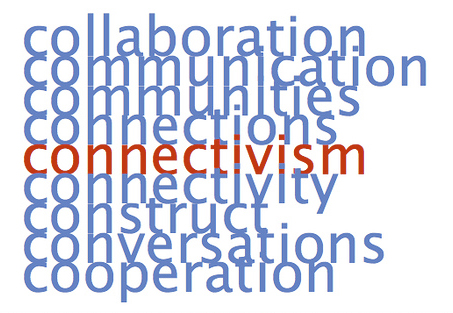
[Image courtesy of wlonline, via Flickr]
Connectivism has been called, “A Learning Theory for the Digital Age” (Siemens, 2005). I aim to share what I have learned about connectivism, and what it means for English Language Teaching.
What I share comes from a Massive Open On-line Course (MOOC) called, Connectivism and Connected Knowledge 2011 (CCK11). The course facilitators are George Siemens and Stephen Downes. Siemens first wrote about connectivism in 2005. Since then, he and Downes have worked together to develop the theory and practice of connectivism. The CCK11 course is where I enter the picture, as a learner and EFL teacher.
In this post, I will do three things:
- Define connectivism.
- State the principles of connectivism.
- Relate connectivism to EFL teaching.
Before I begin, I add that I am sharing what I have understood in CCK11. Therefore, I alone am responsible for any errors, omissions, or inaccuracies in this post, and not George Siemens or Stephen Downes.
1. Connectivism is defined as, “a model of learning that acknowledges the tectonic shifts in society where learning is no longer an internal, individualistic activity. How people work and function is altered when new tools are utilized.
The field of education has been slow to recognize both the impact of new learning tools and the environmental changes in what it means to learn. Connectivism provides insight into learning skills and tasks needed for learners to flourish in a digital era” (Siemens, 2005).
For me, this means learning has changed in three ways. Firstly, what we learn with has changed. Learners use digital tools, (Web 2.0), to create content, not only be passive consumers of knowledge.
Secondly, how we learn has changed. It’s not an individual activity. Learning takes place through collaborating with other people.
Thirdly, where we learn has changed. The digital learner can learn anywhere, anytime, 24/7. It is clear (to me) that teachers need a principled theory of learning for digital learners.
2. In 2005, Siemens identified 8 principles of connectivism:
- Learning and knowledge rests in diversity of opinions.
- Learning is a process of connecting.
- Learning may reside in non-human appliances.
- Capacity to know more is more critical than what is currently known.
- Nurturing and maintaining connections is needed for continual learning.
- Ability to see connections between fields, ideas, and concepts is a core skill.
- Accurate, up-to-date knowledge is the aim of all connectivist learning.
- Decision-making is a learning process. What we know today may change tomorrow. The right decision today may be the wrong decision tomorrow.
3. If we accept these eight principles, what does this means for teaching? I want to answer by giving three examples of outstanding teachers who are “connected”.
The first is Shelly Terrell. Shelly regularly uses technology to connect not only her students to the world, but also teachers, world-wide, to each other. She produced a video, called, “Why We Connect”, which explains her views. It can be seen on my blog, here.
The second example is David Deubelbeiss. David wrote and self-published an innovative coursebook for digital learners called, “We Teach | We Learn”. He calls his approach, Student Created Content. He explains his book in this YouTube video. “The student is a participant, a social participant in their own learning and creation.” It can be seen on my blog here.
The third example is myself. I use my blog, Profesorbaker’s Blog, as a way to connect to other teachers world-wide. From the two examples above, you can see that I am connected to Shelly, who lives in Germany. I am also connected to David, who lives in Canada. And me? I live in Santiago de Chile.
To conclude, connectivism offers EFL teachers a principled way of teaching that recognises the digital age that our students live in. Teaching in a connected way is not new. We’ve been doing it already, as Shelly and David demonstrate. We have the possibility now of teaching in a more principled, connectivist way.